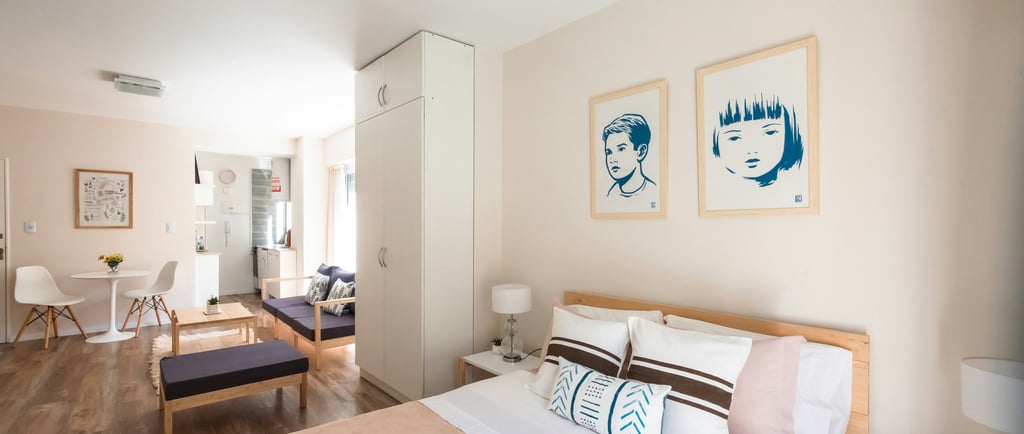3 Tips for Designing a Care Home Interior That Feels Like Home for the Elderly
Designing a care home that feels welcoming is essential to resident wellbeing. Through the thoughtful use of warm colors, supportive furniture, and calming lighting, care homes can create spaces that foster comfort, safety, and emotional security. Personalisation, familiar décor, and nostalgic elements help evoke a sense of home, while functional, mobility-friendly layouts and assistive technologies ensure independence and safety. By encouraging social interaction through well-designed communal and outdoor spaces, care homes can nurture meaningful connections and build a strong sense of community.
7/11/20254 min read


Creating a Warm and Inviting Atmosphere
Designing the interior of a care home to promote a warm and inviting atmosphere is crucial for fostering a sense of belonging among elderly residents. A welcoming environment can significantly influence an individual’s mood and overall well-being. One effective approach to achieving this is by incorporating warm colors throughout the decor. Shades such as soft yellows, gentle oranges, and soothing earthy tones have been shown to create a sense of comfort and coziness. These color choices aid in instilling feelings of safety and tranquility, which can be particularly beneficial for seniors who may experience anxiety in new or unfamiliar settings.
In addition to color, the selection of furniture plays a vital role in establishing an inviting space. Comfortable chairs and sofas that offer adequate support are essential for elderly residents, many of whom may have mobility challenges. Incorporating a variety of seating options encourages social interaction while ensuring that all residents can find a comfortable place to sit and engage in activities. Furniture should also be arranged in a way that promotes accessibility, allowing residents to move freely without obstacles, reinforcing the feeling of independence.
Lastly, lighting is another critical element that contributes to a warm atmosphere. Soft, ambient lighting can evoke a sense of calmness, while also aiding in visibility for those with reduced eyesight. Utilizing natural light when possible can elevate the mood of the space, making it feel more open and inviting. Soft lamps, wall sconces, and adjustable lighting solutions can enhance the overall ambiance. In essence, by thoughtfully choosing colors, furniture, and lighting, care homes can create an environment that resonates warmth and comfort, effectively supporting the emotional and psychological needs of elderly residents.
Incorporating Personalization and Familiarity
Creating a care home environment that evokes a sense of belonging and comfort for the elderly involves thoughtful integration of personalization and familiarity. Personal items play a crucial role in this approach, as they serve as reminders of one's past and can significantly enhance emotional well-being. Encouraging residents to bring familiar objects from their former homes, such as photographs, cherished mementos, or their favorite artwork, can help create a more inviting atmosphere. These personal touches not only reflect individual personalities but also foster connections between residents and their surroundings.
Moreover, allowing residents to customize their living spaces is essential for promoting a comforting environment. This could include options for selecting wall colors, arranging furniture, or choosing decorative elements that resonate with their personal tastes. Providing residents with the autonomy to modify their space encourages a sense of ownership, empowering them to express their unique identities. As they surround themselves with familiar décor, residents may experience a greater feeling of security and stability, essential for their well-being.
The atmosphere in a care home can be markedly enhanced by incorporating elements that evoke nostalgia. For example, integrating aspects of local history or familiar cultural artifacts can create a sense of connection to the community and enhance engagement. Familiar scents, music, and textures can also contribute to a homely ambience. Ultimately, focusing on these familiar elements creates an environment that feels less institutional and more like home, allowing elderly residents to thrive emotionally while experiencing a comforting and supportive community.
Designing Functional and Safe Spaces
Creating an interior design that feels like home for elderly residents requires a delicate balance between aesthetics, functionality, and safety. One of the key considerations is to establish mobility-friendly layouts. Elderly individuals may have limited mobility due to various health conditions, thus it is essential to design spaces that accommodate their needs. This includes wide corridors, clear paths of movement, and strategically placed furniture that allows ease of access. Avoiding clutter is crucial, as it helps prevent falls and ensures that residents can navigate their environment with confidence.
Moreover, the integration of clear pathways is an important aspect of safety in care home interiors. Residents should be able to move from one area to another without obstacles hindering their progress. Use of contrasting colors for floors and walls can visually delineate pathways, making it easier for individuals with visual impairments or other mobility challenges to understand their surroundings. Additional measures such as adequate lighting and non-slip flooring materials further enhance safety, creating an inviting atmosphere where residents can feel secure.
Incorporating assistive technologies is another vital component in designing functional interiors for the elderly. Smart home features such as automated lighting, voice-activated systems, and emergency alert devices can greatly improve the day-to-day experience for residents. These technologies not only facilitate independence but also provide peace of mind to both residents and their families. Furthermore, ensuring that all furniture is ergonomically designed and easy to use will support the physical well-being of the elderly, allowing them to maintain their independence and dignity.
Ultimately, a thoughtful approach to the design of functional and safe spaces will foster an environment that feels both comfortable and home-like, ensuring the well-being of elderly residents in care facilities.
Encouraging Social Interaction Through Design
Designing a care home that fosters social interaction is essential in creating an environment where elderly residents can form meaningful connections. Communal spaces play a significant role in this process, serving as gathering points that encourage residents to engage with one another. Lounges, dining areas, and recreational rooms should be designed to facilitate conversation and social activities. Open floor plans can enhance visibility, making it easier for residents to see one another and feel invited to join in communal activities.
Dining areas, in particular, hold great importance in promoting social interactions among residents. By arranging tables in a way that encourages groups to dine together, care homes can create a warm and welcoming atmosphere. Consideration should also be given to the décor, lighting, and layout of these spaces to ensure they feel inviting. Comfortable seating and accessibility can make a significant difference in residents’ willingness to join communal meals, ultimately enhancing their overall experience.
Additionally, incorporating outdoor spaces into the care home design can greatly enhance opportunities for socialization. Gardens, patios, or balconies not only provide fresh air but also create a tranquil environment for group activities. Outdoor areas can serve as venues for organized events, such as gardening clubs or afternoon tea, which helps residents connect with one another while enjoying the benefits of nature. The design should focus on ensuring these areas are easily accessible and equipped with comfortable seating, encouraging residents to spend time outdoors and engage socially.
The thoughtful design of communal and outdoor spaces can help combat feelings of loneliness among residents. By creating inviting environments that encourage social interaction, care homes can enhance community living, transforming the facility into a home where residents feel valued and connected.
Care Interiors Co.
The experts in refurbishing care spaces.
© 2025. All rights reserved. Privacy Policy. Terms and Conditions.
Opening Hours
7am - 5pm
